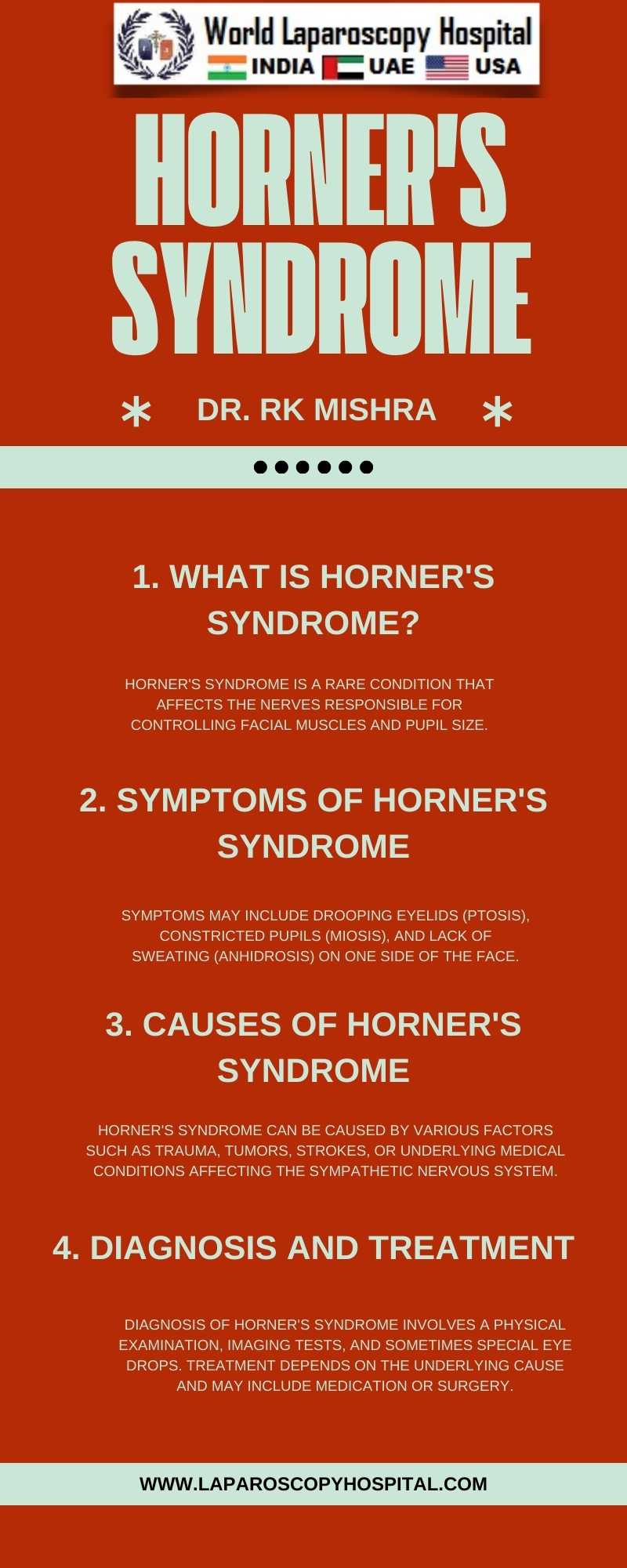Horner's Syndrome is a rare condition that results from a disruption of the sympathetic nerve pathway to the eye and face. It is characterized by a distinct set of symptoms, including ptosis (drooping eyelid), miosis (constricted pupil), anhidrosis (lack of sweating), and enophthalmos (sunken appearance of the eye). While Horner's Syndrome can occur due to various underlying causes, such as tumors, trauma, or vascular issues, it is particularly relevant in the context of thoracic and neck surgeries, where damage to the sympathetic nerves can occur.

Symptoms of Horner's Syndrome
One of the hallmark signs of Horner's Syndrome is ptosis, or drooping of the upper eyelid, which occurs due to the disruption of the sympathetic nerve fibers that innervate the eyelid muscle. This drooping can be mild to severe and may be accompanied by other symptoms, such as miosis, or constriction of the pupil, on the affected side. Anhidrosis, or the absence of sweating, is another common symptom, particularly noticeable on the affected side of the face. Additionally, some patients may experience enophthalmos, or a sunken appearance of the eye, due to the loss of sympathetic tone to the smooth muscle around the eye.
Causes of Horner's Syndrome
Horner's Syndrome can result from a variety of underlying causes, including tumors, trauma, or vascular issues, that disrupt the sympathetic nerve pathway. In the context of thoracic and neck surgeries, the syndrome can occur due to damage to the sympathetic nerves that run along the carotid artery and through the thorax. This damage can be caused by surgical manipulation, leading to the classic symptoms of Horner's Syndrome.
Management of Horner's Syndrome in the Context of Thoracic and Neck Surgeries
The management of Horner's Syndrome in the context of thoracic and neck surgeries involves a multidisciplinary approach, including close collaboration between surgeons, neurologists, and ophthalmologists. The primary goal of management is to address the underlying cause of the syndrome, which may require further diagnostic testing, such as imaging studies, to identify the exact site of nerve damage.
In cases where the syndrome is caused by surgical trauma, careful attention to surgical technique and anatomy is essential to minimize the risk of nerve injury. Additionally, postoperative monitoring and rehabilitation may be necessary to optimize recovery and minimize long-term complications.
Conclusion
Horner's Syndrome is a rare condition that can occur as a result of damage to the sympathetic nerve pathway. In the context of thoracic and neck surgeries, the syndrome can be particularly relevant due to the proximity of the sympathetic nerves to the surgical site. Early recognition and management of Horner's Syndrome are essential to optimize outcomes and minimize long-term complications for patients undergoing these types of surgeries.